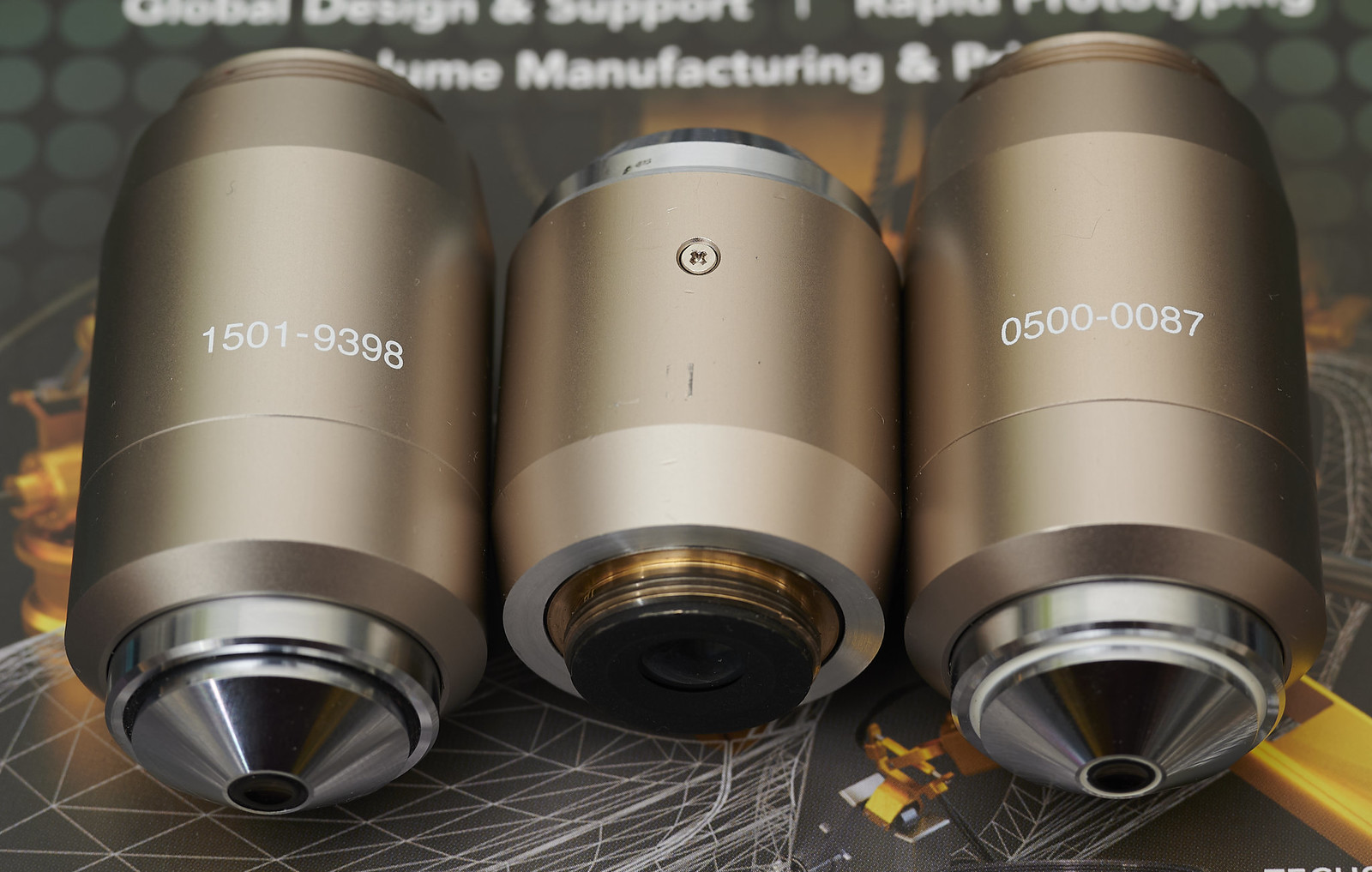The objective uses the same shell as those weird Nikon 20x objectives. More on that when I'm bothered.

The seller claimed it was for phase contrast. However, the internal annulus is far too small. It's similar to the ring of a Ph1 or PhL objective. Being a high NA oil immersion objective, will such a tiny ring even produce phase contrast effects? I don't know.

My speculation based on anecdotes and its construction concluded it's a UIS2 60x objective. I paid $300 for it. The main rationale was its spring loaded front assembly construction, opposed to UIS high magnification objectives having a recessing front tip, infamous for clogging up and not responding (mostly due to the user mishandling it).
I drafted a method that won't be too involved and will at least tell me whether this prism is UIS or UIS2. The method is very simple, just throw money at it. I've always wanted a water immersion objective because immersion oil drives me nuts. If I do get a 60x water objective, I'll get the DIC prism too, and it must be UIS2. With that DIC prism, I'll be able to easily determine the objective's technology and subsequently its age, with a small caveat. Nonetheless, an utter mismatch will summon radically weird banding issues, yielding a very weak DIC effect.
The DIC prism for 60x UIS2 objectives landed several days ago. After a busy but fun Christmas, I fired it up. It was compared against a UIS2 60x water immersion objective. I'll lazily refer to it as 60xW from now on. The Normaski slider I used was the U-DICT, compatible with my water immersion objective. 40x and 60x oil immersion UIS2 objectives are only officially compatible with the U-DICTS, where the BFP1 (back focus place) lever is engaged.

The results are almost identical. Indicating prism compatibility. If you're unaware, different objectives require different condenser Normaski prisms. UIS and UIS2 condenser prisms are usually incompatible. Mixing them will result in weird banding. It's complicated for UIS, as apos and fluorites use different prisms, so do their oil immersion counterparts. This is due to the different placement of the back focal plane. UIS2 unifies this placement among fluorites and superapochromats.
There is however a small distinction. Several oil immersion high power objectives officially require the U-DICTS (or the other exotic ones with the lever) with the BFP1 lever engaged. The BFP of the PlanApo 60x N (numerical aperture or NA=1.42) is -25mm, whereas the 60xW and 60xO-XApo (NA=1.42) has a BFP=-19.1mm. I do not have the ability to measure the BFP of oil immersion objectives. A simple method for dry objectives is shining a low wattage collimated laser through the front to project a round beam onto a piece of paper on the back, note the diameter of the beam and distance to the paper from the objective, and do it several times for different distances. Then just make a regression equation and find the distance where the diameter = 0, that's approximately the BFP location. Anyway, it's not as trivial for high power objectives. I don't know a good method.
Here's what prism mis-match looks like.

This isn't a one-to-one test due to the shear being inconsistent, but it's clear that the second image suffers from very odd banding (I inverted the colours to reverse the DIC bias), while the first one illustrates a very pleasant and uniform gradation. The DIC affect is also weak, as the objective side Normaski prism can't bring the light rays together. I cannot find much official data on the BFP of UIS objectives. What I do know is, they are a garbled mess. I'd love to have a source if possible.
Now, the comparsion.

Lowered global contrast due to the unfortunate annulus, causing light to be scattered. With added contrast, the sharpness levels are about the same. The 60xW has an NA of 1.20. The 60xO's NA is either 1.35 or 1.42. The condenser I'm using is equipped with a dry top lens, NA capped at 0.9.
I can safely say this is a UIS2 60x objective now. The question remains, which one? There's several UIS2 60x oil immersion apo objectives. HR versions, iris controlled, XApos (due to its age) and TIRF ones can be ruled out. This leaves us with 2 options. The SApo with an NA of 1.35 and the PlanApo N with an NA of 1.42. Both of these require the BFP1 lever to be engaged on the objective Normaski prism. My example didn't use such a prism, producing almost identical results. Is the difference between a BFP of -25mm and -19.1mm negligible for normal use? Of course, the UIS 60xO objectives might just have a BFP of -19.1mm as well, making prism mismatch here negligible. The chances of that seem low however. I've also observed the interference patterns using a phase telescope, they are identical between these 2 objectives. Puzzling!
At least there's progress, I love a good mystery. Next step is to identify the objective and make sense of its small yet thick phase annulus. I have a set of old phase annuli that's photoresistive film based. Maybe the smallest one is a match. After I've played with it more, I'll collate all the information and make a lengthy article.

Have a happy New Year!


